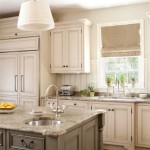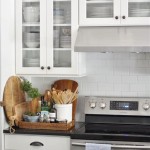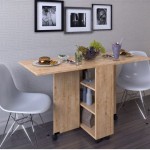A Guide To Choosing The Perfect Large Kitchen Rugs
Selecting the right rug for a kitchen, especially a large one, involves careful consideration of several factors. A well-chosen rug can enhance the kitchen's aesthetic appeal, improve comfort underfoot, and even protect the flooring. However, the wrong choice can lead to practical problems and detract from the overall design. This guide provides detailed information on various aspects of choosing large kitchen rugs, ensuring a harmonious blend of style and functionality.
Understanding the Purpose of Kitchen Rugs
Before diving into the specifics of materials, sizes, and styles, it's crucial to understand the role a rug plays in a kitchen environment. Kitchens are high-traffic areas prone to spills, crumbs, and other messes. Therefore, a rug must be durable, easy to clean, and capable of withstanding the rigors of daily use. Furthermore, it should provide a degree of comfort, particularly for individuals who spend significant time standing while cooking or cleaning.
Beyond practicality, a rug can significantly impact the kitchen's visual appeal. It can serve as an accent piece, complementing or contrasting with the existing color scheme and design elements. It can also define specific zones within a large kitchen, such as the cooking area or the space in front of the sink. The rug can introduce texture, pattern, and warmth, softening the hard surfaces typically found in kitchens and creating a more inviting and comfortable atmosphere.
Finally, a rug can offer a layer of protection for the underlying flooring. Hardwood, tile, or laminate can be susceptible to scratches, dents, and stains. A strategically placed rug can minimize wear and tear, extending the lifespan of the flooring and reducing the need for costly repairs or replacements.
Key Considerations: Material, Size, and Style
Once the purpose of the rug is established, the next step involves evaluating the essential factors that will determine its suitability for the kitchen environment. These include the material, size, and style of the rug.
Material Selection
The material of a kitchen rug is paramount, influencing its durability, cleanability, and overall appearance. Several materials are commonly used in kitchen rugs, each offering distinct advantages and disadvantages.
Synthetic Materials: Nylon, polypropylene (olefin), and polyester are popular choices for kitchen rugs due to their resilience and stain resistance. These synthetic fibers are generally easy to clean, retaining their color and shape even after repeated washing. They are also relatively affordable, making them a practical option for budget-conscious consumers. However, synthetic rugs may not possess the same luxurious feel or natural aesthetic as those made from natural fibers.
Natural Fibers: Cotton, wool, and jute are natural options that offer a different set of benefits. Cotton rugs are soft, absorbent, and machine washable, making them ideal for use near the sink or dishwasher. Wool rugs are known for their durability, resilience, and natural stain resistance. They also provide excellent insulation, adding warmth and comfort to the kitchen. Jute rugs offer a rustic, textured look and are relatively durable, although they may not be as stain-resistant as other materials. Natural fiber rugs require more careful maintenance and may be more susceptible to damage from prolonged exposure to moisture.
Blended Materials: Some rugs combine both synthetic and natural fibers to capitalize on the strengths of each. For instance, a cotton-polyester blend may offer the softness of cotton with the stain resistance of polyester. These blended options can provide a good balance of performance and aesthetics.
When selecting a material, consider the frequency of use, the likelihood of spills, and the desired level of maintenance. For high-traffic kitchens with frequent spills, synthetic materials like nylon or polypropylene are often the best choice. For kitchens where aesthetics are a priority and spills are less frequent, natural fibers like wool or cotton may be more suitable.
Determining the Appropriate Size
The size of the rug is another critical factor that impacts both the functionality and aesthetics of the kitchen. A rug that is too small may appear insignificant and fail to provide adequate coverage or protection, while a rug that is too large can overwhelm the space and interfere with traffic flow.
Consider the Layout: The kitchen's layout dictates the ideal size and shape of the rug. In galley kitchens, a long runner rug placed in the center of the walkway can provide comfort and protection. In larger kitchens with islands, a rug placed in front of the sink or stove can define the work zone and prevent fatigue. Alternatively, a larger rug could be placed under the kitchen table to define the dining area.
Measure Accurately: Precise measurements are essential for selecting the right size rug. Measure the area where the rug will be placed, noting the dimensions of any obstacles such as cabinets or appliances. Leave adequate space around the rug to prevent it from obstructing walkways or interfering with door swings. Generally, it is advisable to leave at least 6 to 12 inches of bare floor visible around the rug's perimeter.
Standard Sizes: Standard rug sizes commonly used in kitchens include runners (typically 2 to 3 feet wide and 6 to 12 feet long), small area rugs (3x5 feet or 4x6 feet), and larger area rugs (5x8 feet or 6x9 feet). However, custom-sized rugs can be created to fit specific needs and dimensions.
Placement Considerations: When placing the rug, ensure that it does not create a tripping hazard. If the rug overlaps with the transition to another flooring type, consider using a rug pad or rug tape to secure it in place. Also, avoid placing the rug in areas where it will be constantly exposed to moisture, such as directly in front of the dishwasher, as this can damage the rug and promote the growth of mold or mildew.
Choosing the Right Style
The style of the rug should complement the kitchen's overall design aesthetic. A rug can either blend seamlessly with the existing décor or serve as a statement piece, adding visual interest and personality to the space.
Color and Pattern: The color and pattern of the rug should be carefully chosen to coordinate with the kitchen's color palette. Neutral colors, such as beige, gray, and white, are versatile and can complement a wide range of design styles. Bold colors and patterns can add vibrancy and energy to the kitchen, but should be used sparingly to avoid overwhelming the space. Consider the existing colors of the cabinets, countertops, and backsplash when selecting the rug's color and pattern. A rug with subtle patterns or textures can add visual interest without being too distracting.
Design Style: The rug's design style should align with the kitchen's overall aesthetic. For modern kitchens, geometric patterns, abstract designs, or minimalist styles may be appropriate. For traditional kitchens, oriental rugs, floral patterns, or vintage-inspired designs can add warmth and character. For farmhouse-style kitchens, braided rugs, jute rugs, or rugs with rustic motifs can enhance the overall charm. Coastal-themed kitchens might benefit from rugs with nautical stripes, seashell patterns, or blue and white color schemes.
Texture: The texture of the rug can also contribute to the overall style and feel of the kitchen. A plush, high-pile rug can add warmth and comfort, while a flatweave rug offers a more streamlined and contemporary look. Jute rugs provide a natural, textured feel that is well-suited for rustic or bohemian-inspired kitchens. Consider the tactile experience when selecting a rug, as it will influence the overall comfort and enjoyment of the space.
Practical Considerations: Maintenance and Safety
Beyond material, size, and style, practical considerations such as maintenance and safety are paramount when choosing a kitchen rug.
Maintenance
Kitchen rugs are inevitably exposed to spills, crumbs, and other messes. Therefore, ease of cleaning is a crucial factor to consider. Opt for rugs that are stain-resistant and machine washable whenever possible. For rugs that cannot be machine washed, regular vacuuming and spot cleaning are essential. Promptly address spills and stains to prevent them from setting into the fibers. Consider professional cleaning services for deep cleaning or for rugs made from delicate materials.
Regular vacuuming helps to remove dirt and debris that can accumulate in the rug's fibers, prolonging its lifespan and maintaining its appearance. Use a vacuum cleaner with a brush attachment to loosen and remove embedded dirt. Spot cleaning can be done with a mild detergent and a damp cloth. Avoid using harsh chemicals or abrasive cleaners, as these can damage the rug's fibers. For stubborn stains, consult a professional rug cleaner.
Safety
Kitchens are high-traffic areas where slips and falls are common. Therefore, safety should be a top priority when choosing a rug. Select rugs with non-slip backings or use a separate rug pad to prevent them from sliding on the floor. This is particularly important on hard surfaces such as tile or hardwood. Rug pads also provide additional cushioning and protection for the flooring.
Ensure that the rug lies flat and does not have any curled edges or wrinkles that could create a tripping hazard. Use rug tape or rug anchors to secure the edges of the rug to the floor. Regularly inspect the rug for signs of wear and tear, such as frayed edges or loose fibers. Replace the rug if it becomes damaged or worn to prevent accidents.
Additionally, be mindful of the rug's placement in relation to appliances and fixtures. Avoid placing the rug too close to the stove or oven, as it could pose a fire hazard. Keep the rug away from areas where water is likely to accumulate, such as near the dishwasher or sink, to prevent mold and mildew growth.

How To Choose The Best Kitchen Rug Sizing Guide Rugs Direct

How To Choose The Perfect Kitchen Rug Décor Aid

How To Choose The Best Kitchen Rug Sizing Guide Rugs Direct

How To Choose The Best Kitchen Rug Sizing Guide Rugs Direct

How To Choose The Perfect Kitchen Rug Décor Aid

How To Choose The Best Kitchen Rug Sizing Guide Rugs Direct

Rug Size Guide Boutique Rugs

6 Rules For Choosing A Dining Room Rug Pretty Sources Stonegable

How To Choose The Perfect Kitchen Rug Décor Aid

6 Rules For Choosing A Dining Room Rug Pretty Sources Stonegable
Related Posts








